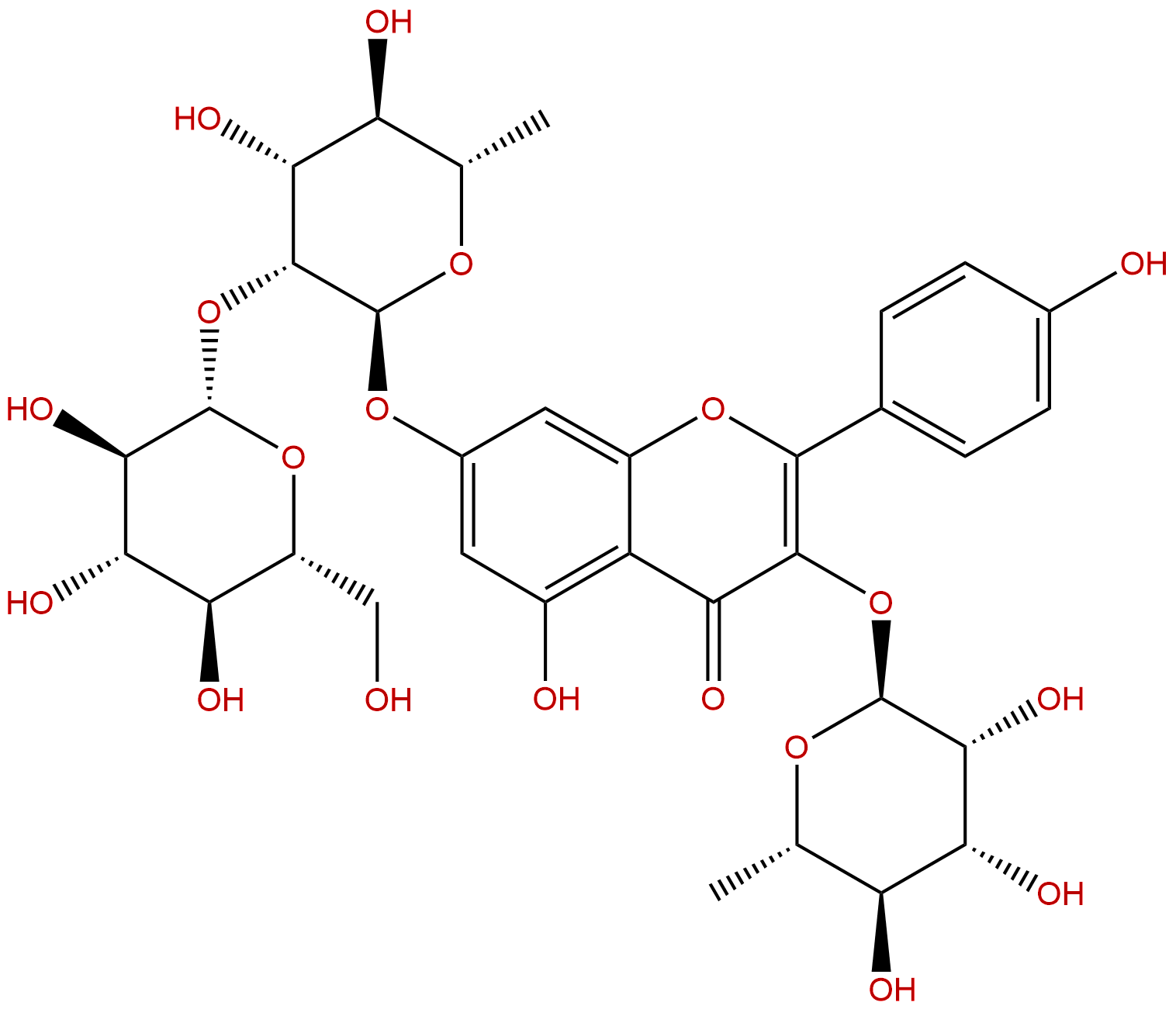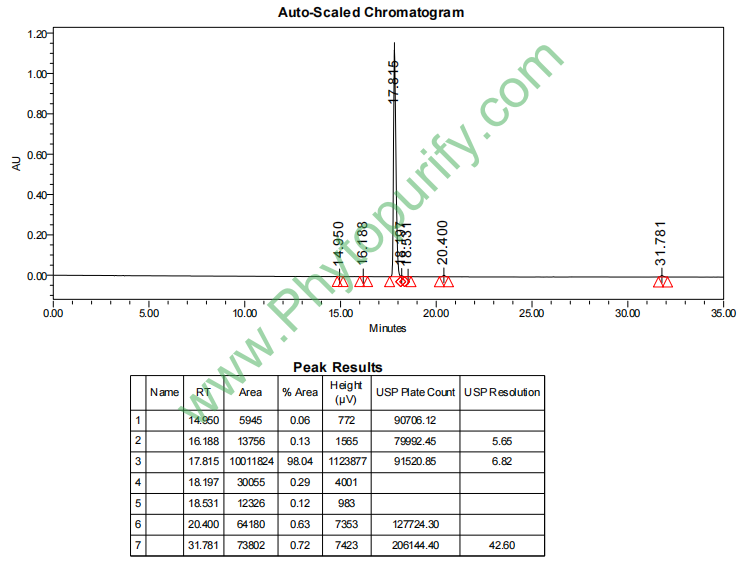
GrosvenorineCAS No.:156980-60-8 |
||||||||||
 |
|
|
||||||||

| Catalogue No.: | BP1487 |
| Formula: | C33H40O19 |
| Mol Weight: | 740.664 |
| Botanical Source: | Siraitiae fructus |
Synonym name:
Catalogue No.: BP1487
Cas No.: 156980-60-8
Formula: C33H40O19
Mol Weight: 740.664
Botanical Source: Momordica grosvenorii and Siraitia siamensis; Luohanguo
Purity: 95%~99%
Analysis Method: HPLC-DAD or/and HPLC-ELSD
Identification Method: Mass, NMR
Packing: Brown vial or HDPE plastic bottle
Can be supplied from milligrams to grams. Inquire for bulk scale.
For Reference Standard and R&D, Not for Human Use Directly.
Description:
Grosvenorine exhibits good antibacterial and antioxidant activities, with its metabolites possessing more potent activities, intestinal bacteria play an important role in the gastrointestinal metabolism of grosvenorine and significantly affect its pharmacological activities.
References:
Chem Biodivers. 2015 Nov;12(11):1652-64.
The Gastrointestinal Tract Metabolism and Pharmacological Activities of Grosvenorine, a Major and Characteristic Flavonoid in the Fruits of Siraitia grosvenorii.
Grosvenorine is the major flavonoid compound of the fruits of Siraitia grosvenorii (Swingle) C. Jeffrey, a medical plant endemic to China.
METHODS AND RESULTS:
In the present study, for the first time, the Grosvenorine metabolism in an in vitro simulated human gastrointestinal tract (including artificial gastric juice, artificial intestinal juice and intestinal flora), as well as its pharmacological activities (including anti-complement, antibacterial and antioxidant activities), was investigated. The results showed that Grosvenorine was metabolized by human intestinal flora; its four metabolites were isolated by semi-preparative HPLC and identified by NMR as kaempferitrin, afzelin, α-rhamnoisorobin, and kaempferol. Further pharmacological evaluation showed that Grosvenorine exhibited good antibacterial and antioxidant activities, with its metabolites possessing more potent activities. Although Grosvenorine did not present obvious anticomplement activity, its metabolites showed interesting activities.
CONCLUSIONS:
This study revealed that intestinal bacteria play an important role in the gastrointestinal metabolism of Grosvenorine and significantly affect its pharmacological activities.
HPLC of Grosvenorine
